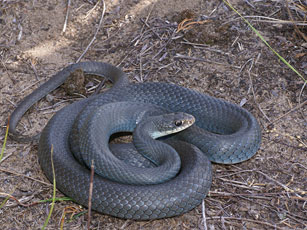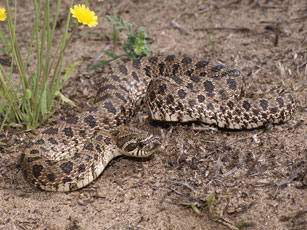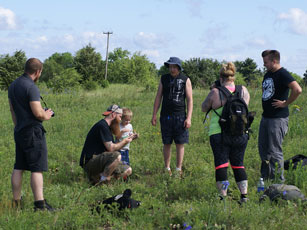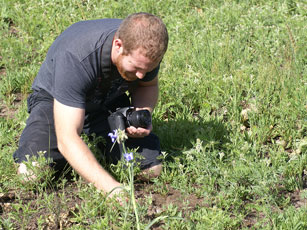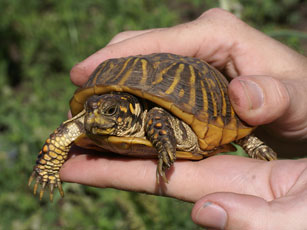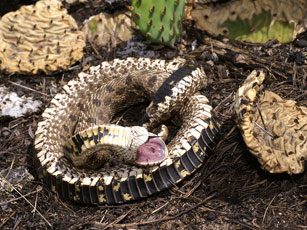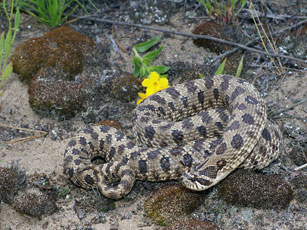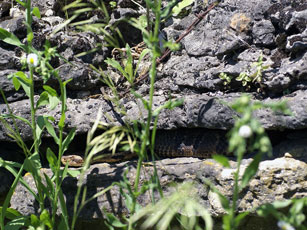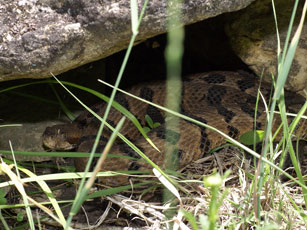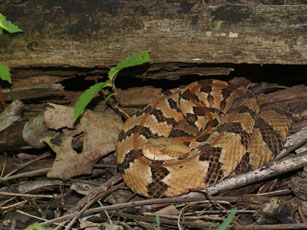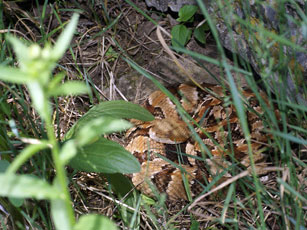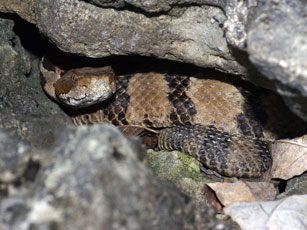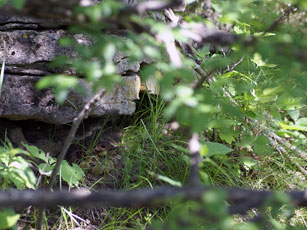
6-6-16
Trip Details
Location: Western Illinois and Jackson County, IA
Weather Ilinois: 65-75 degrees, partly cloudy, breezy.
Weather
Iowa: 75 degrees, partly cloudy, light winds
Time Illinois: 9:00 am - Noon
Time Iowa: 1:30 pm - 3:00 pm
Herpers Illinois: Sean, Toni and Ollie Childers, Dan Hoffman, Chad Mitchell, Peter Paplanus, Jim Scharosch
Herpers Iowa: Chad Mitchell, Peter Paplanus, Jim Scharosch
Account by: Jim Scharosch
Photos by: Jim Scharosch
Headed out to western Illinois to meet up with a bunch of herpers I have followed on Facebook for a number of years. I enjoy meeting and herping with people that I connect with online, it's always fun to see how the personalities of the people you only know in the digital world align with who they are in the real world. It also gave me an excuse to head to this spot where I had had a productive and enjoyable visit not long ago. As I drove through the sunny Iowa landscape I was thinking that it was warming up quickly and we might be a tiny bit late to find our prime quarry, the western hognose, out on the crawl. When we met up at the location at 9:00 the clouds were still dark and the wind was blowing. It was about ten degrees cooler and much more cloudy, so my worries were dispelled. We also had a large crew, which is always beneficial when you are trying to locate an animal without the aid of objects to flip. Extra eyeballs on the ground helps to locate animals that are small and really blend in well.
We flipped the few objects that are around the edges of the property and located a garter snake that I chose not to photograph. Under a piece of tin we found a Racer (Coluber constrictor).
It was a nice adult, just under three feet long. It was a nice deep blue gray with a clean white belly that is typical of the area.
It wasn't too long after that that the first Western Hognose (Heterodon nasicus) of the day turned up.
It was a very pretty male that posed nicely for me, not really showing any of the typical hognose reactions to being handled other than hooding it's neck momentarily.
Next came an Ornate Box Turtle (Terrapene ornata) on the crawl.
Soon followed another hognose, this one crawling to a retreat under one of the smaller trees in the prairie.
This one was not to be convinced that we meant him no harm, so he refused to come out of his playing dead routine.
After quite a bit of walking, we were headed back to our vehicles when the third hognose of the day was found. This one played dead as well, but as he began to come out of it he would lay in a normal coil but wouldn't quite close his mouth. Somehow Chad came up with the idea of giving him a drink from his water bottle. He poured a bit into the cap and slowly poured it onto the snakes head. It was wacky, but the "dead" snake drank the water and then closed his mouth to lay for photos. It was the nuttiest thing ever, but a trick I will have to remember. Might have to try that with eastern hogs sometime too, if I run into one again before I die...
We drove off to check another nearby spot with no luck, and at this point our group split, with Chad, Peter and I headed off to Iowa to visit the timber den where the Herpjournal Habitat Restoration Project has been going on. I told them I wasn't too sure what we would see there, as the timbers were already moving away from the dens and the females may not quite be at the rooks yet.
As we drove in we slowed down along the road and I pointed out the outcrop that was within a few feet of the road where I had found a timber last year. From his spot in the passenger seat of my truck, Chad spotted a Timber Rattlesnake (Crotalus horridus) in the crevice!
It was about two and a half feet long. We hadn't even gotten out of the truck yet and we had our first timber. I thought that might bode well for the day, I was right.
We climbed the hill to the south den and we found another timber peeking out from under a rock that has held them in the past.
An in-situ photo of the two foot long animal. If you look carefully, you can see the tail dead center in the photo. Like the rattlesnakes on Mexico's Santa Catalina Island, this snake had no rattle. Not that it didn't have any rattle segments, the end of the tail had no rattle, no button, and no visible damage or scarring that would indicate some previous injury. I'm sure it was the result of an injury, but it was cool and interesting. I wish I would have taken a better photo of the tail. I hope I see this snake again sometime. We joked about it being a Santa Catalina Island Timber Rattlesnake.
As we circled an outcrop we head another timber buzzing, but couldn't locate it. I mentioned that finding three at the south den was a good sign for what we might see at the north den...
We headed to the north den and there were no snakes at the lower rookery rock. That wasn't too surprising, we were a bit early in the year for that one. We headed up the hill, checking the outcrops that we had opened up with our cedar removal this year. There was nothing at the lowest of these areas. Pete sat on a log to take a break to make a phone call, and soon called out that he had spotted a timber. It was coiled along the log he was sitting on, maybe ten feet from where he was located.
It was a young adult, like most we would see today. It was a the beautiful yellow gold that we ofen see, and was posed perfectly for an in-situ shot along the log.
As they were taking photos, I found another timber coiled near an outcrop.
It was a near carbon copy of the other snake that they were photographing thirty feet away. These two snakes were utilizing the areas where we had cut down the cedars to open the canopy to more sunlight. They were using the portions that were shaded by deciduous trees, but were within an area where previously we had not seen timbers in the spring.
We walked around the den area without seeing any timbers, which wasn't surprising. We went to the second rookery, which is farther up the hill, closer to the den. I didn't get any photos, but there were three timbers on the rookery! Two were smaller, probably too small to be breeding aged females, but one was a very large snake, sitting right in the same area where I observed the females that rooked there last year. I'm looking forward to visiting this snake again this summer.
Soon after leaving the rook area Chad made a pretty amazing spot of this last year's baby timber tucked under a rock in a rock jumble.
Soon I heard Peter, who was a ways away from me at the time, say that he hoped to get another one to put us at double digits for the day. I thought to myself that he was in the right spot to get one as there were a number of small rock shelfs in that area that often hold timbers, and a few seconds later he called out that he had one. About ten seconds later (if that) I found the last one of the day. Peter's got up under the shelf before we could get any photos, but mine held tight. I just took a shot from a distance and let them get the shots they wanted.
It's difficult to predict how you will do when spring starts to turn into summer. I left the house in the morning thinking I would be happy with a single hog and a single timber. We ended up with three hogs and eleven timbers!! It was fun getting out on the Illinois prairie with the large group and it was fun sharing our magical spot with a couple of guys who I could tell really understood what they were in the middle of. It was a pretty epic day all in all.

